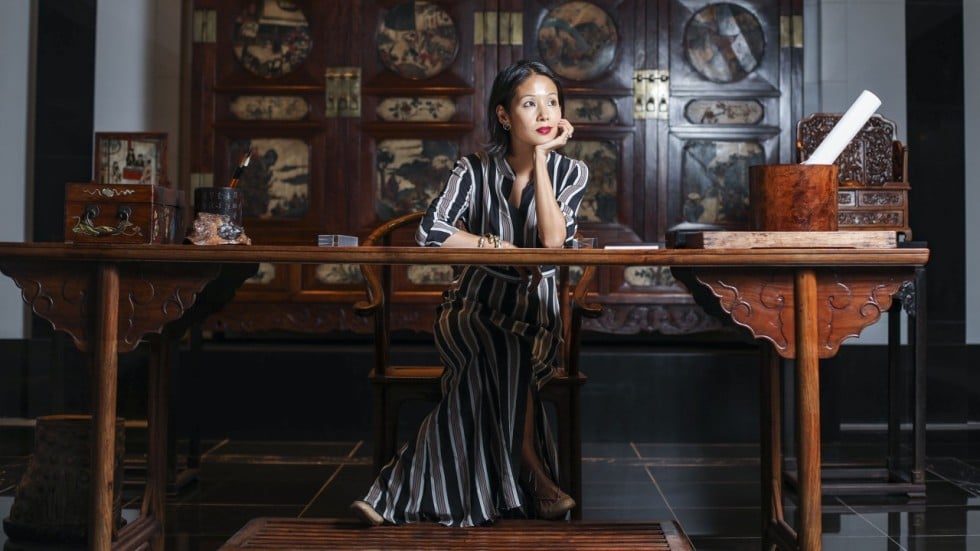
A new exhibition at Hong Kong’s largest private museum has all the trappings of an expensive mistake.
It allows visitors the opportunity, not only to see rare examples of exquisite Ming and Qing dynasty antique furniture and artefacts, but to touch and feel them, too.
Advice for Chinese antique buyers on purchasing European furniture
Ink and Wood runs at the Liang Yi Museum in Hollywood Road, Sheung Wan, until February 2019 and invites visitors to experience the refined aesthetics of the traditional Chinese scholar’s studio, or wenfang.
“We encourage our visitors to sniff the wood, sit in a chair, take a selfie,” says managing director Lynn Fung Yee-ling, who opened the museum in 2014, originally to allow public access to the unrivalled private collections of her millionaire father, Hong Kong financier Peter Fung Yiu-fai.
“Our target audience is basically anyone younger than my father and his friends,” says Fung.
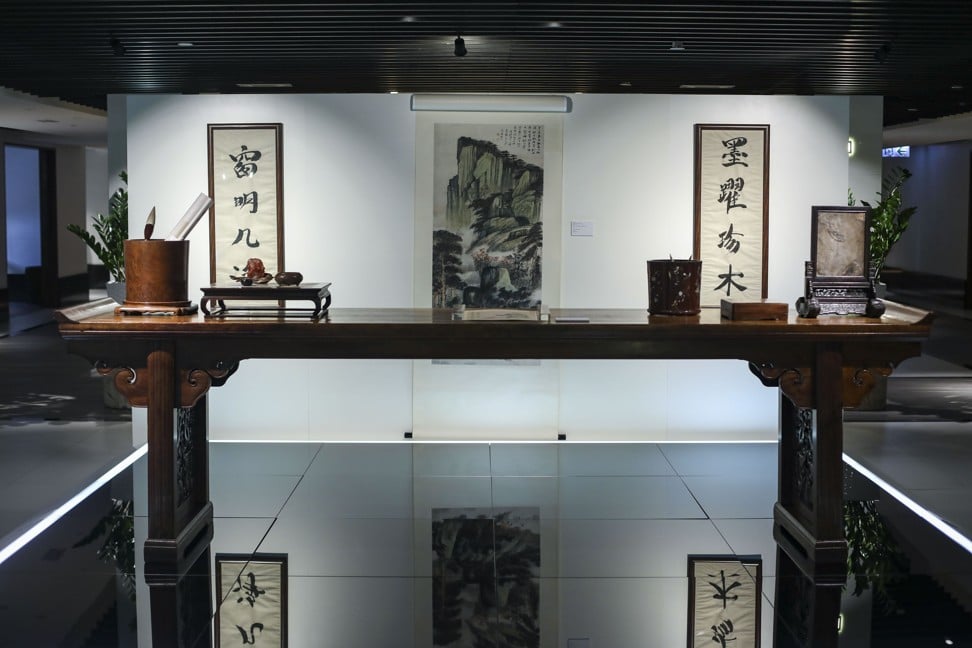
Although cynics might dismiss the museum as the harmless indulgence of a wealthy old man, the Liang Yi is about much more than just showing off a valuable private collection, acquired over the course of four decades. The museum takes a refreshing approach to revealing the secrets of this fascinating aspect of Chinese art and heritage.
Unlike many traditional museums, the Liang Yi does not force visitors to wander around in the semi-gloom, looking at artefacts in glass cases with a hushed reverence. It’s flooded with light, has a contemporary interior design and employs a unique hands-on approach.
Visitors are escorted on a 90-minute guided tour by a highly trained heritage guide, or “docent”, as the museum calls them. You have to book, and it’s not cheap at HK$200 (US$25) for a tour, but Wednesdays are reserved for free pre-booked student groups.
The docent encourages the public to sit on chairs, open cupboards, peer into cabinets and hold highly fragile and valuable artefacts. It’s an unusual policy and one not without risk.
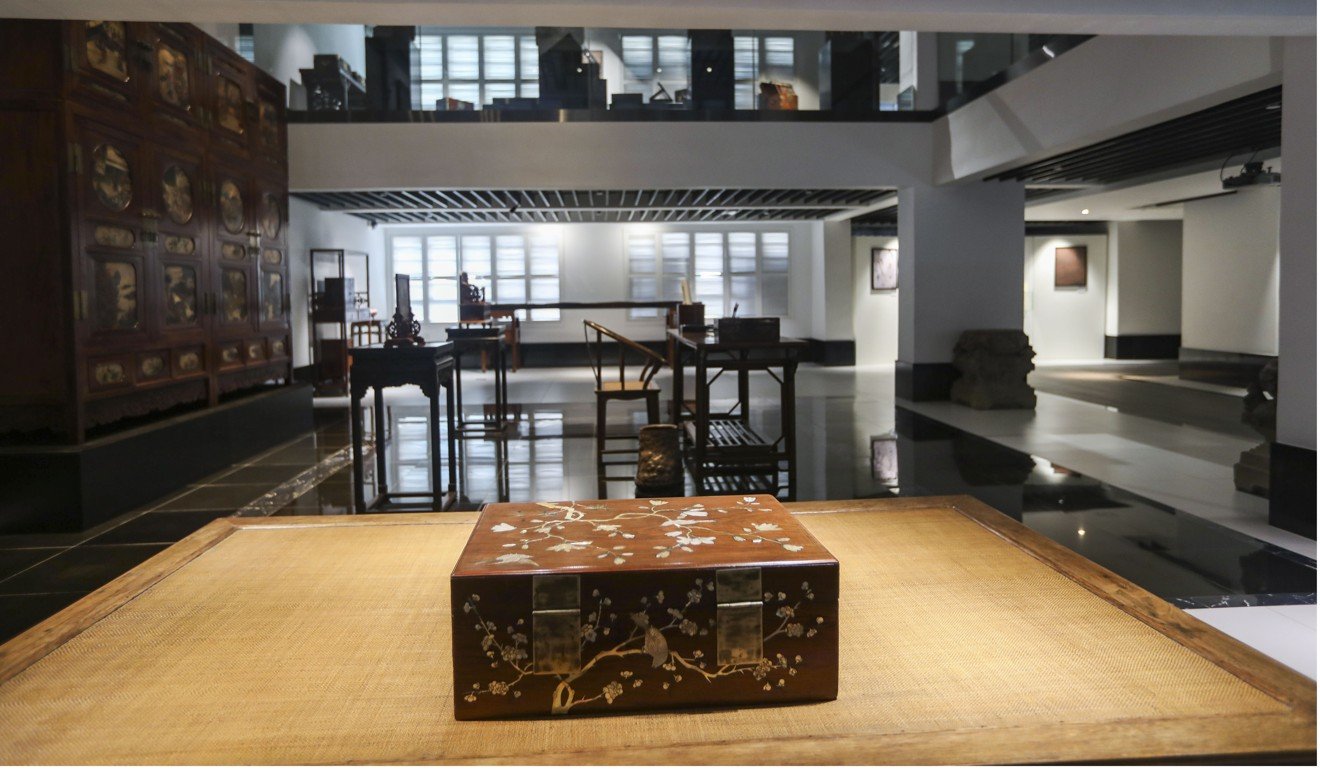
“When we opened the museum, I wanted the exhibits to be open so people could appreciate them. I remember as a child so many museum objects being concealed behind glass,” says Fung. She needed parental approval first.
“When I suggested it to my father, he was reluctant, but I told him the objects had already survived war, revolution and two teenage daughters, and I think that’s what convinced him,” she adds.
However, the policy recently resulted in minor disaster, when a visitor picked up a tiny precious ink holder shaped like an apple, Fung admits. During a tour the docent showed that the top section of the holder could be removed by twisting it, but one visitor was so eager to try it out that they forgot to hold the bottom section and it fell to the floor and shattered.
“Now we are more likely to put the small delicate artefacts behind glass,” Fung says. She did not reveal its value, nor that of the rest of the collection.
“Some of the larger objects might run to millions of US dollars, but the financial value is not so important to us,” she says. However, a rough indication of the collection’s value can be gauged from auctions of comparable collections.
In April 2016, Sotheby’s Hong Kong auctioned a private collection of 18 lots of Ming dynasty furniture and wooden items that had been acquired under the supervision of respected dealer Grace Wu Bruce. According to the Sotheby’s website, the sale fetched more than HK$49 million. Fung estimates there are about 450 items in her father’s collection. Using the 2016 sale prices as a broad-brush guide, Peter Fung’s collection would be valued at somewhere in the region of HK$1.2 billion.
“Being able to touch a million-dollar beautiful object is really the unique selling point of the museum,” she says, and being guided by a trained expert does make the experience more memorable.
Gerry Kong Ka-ming is one of the docents in a staff of nine that run the museum. He encourages our group to hold priceless items and smell the aroma of old brush pots made of precious old hardwoods such as zitan (red sandalwood) and the lighter, warmer-coloured huanghuali (pear).
He invites us to use the brass locking mechanism to unlock a four-tiered zitan scholar’s carrying case, which was used by the scholar’s students to carry inks, brushes and stationery. The meticulously fashioned mechanism on this example of 18th century craftsmanship means that the drawers must be replaced in the correct order or it will not close.
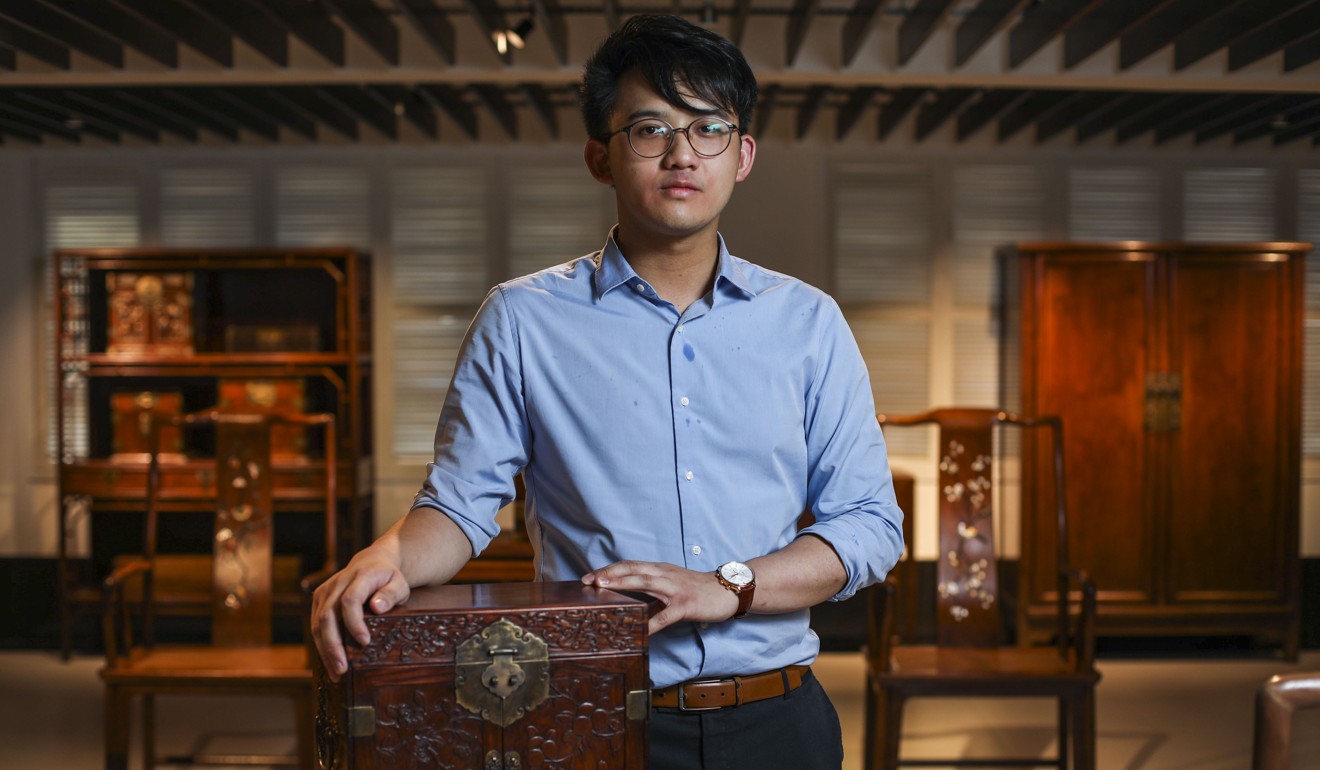
The atmosphere of the ancient wenfang is recreated in part of the exhibition, with desks and chairs combined with the so-called Four Treasures of the Study – brush, ink, paper and inkstone. Ink paintings hang on the walls, and would have been changed regularly so that the subject matter in the painting matched the seasons outside the studio.
Kong describes what he calls “the queen of Mr Fung’s cabinets”, which features fighting scenes from the classic 14th century novel Romance of the Three Kingdoms painted onto marble panels. The magnificent late Ming (17th century) cabinet is made of solid huanghuali and was bought by a US Navy captain from an antique shop in Beijing in the early 1900s, while he was stationed in China.
When Peter Fung tracked it to the family home in California, the admiral’s grandson was converting it into a hi-fi cabinet. Small holes had been drilled in the rear to accommodate the speaker cables.
Chinese porcelain bowl sells in Hong Kong for US$29.5 million
“Most of our visitors tend to be Westerners and tourists, plus China-based aficionados and collectors anxious to see the collection at first hand,” says Kong. He can easily spot the experts because they crawl on their knees to shine pocket torches at the recesses and interior of the objects to verify their quality and authenticity.
Fong explains that the wenfang was a scholar’s retreat or sanctuary from official duties, and designed to be a contemplative place that showed the scholar’s exquisite taste and profound understanding of Chinese history and culture. This class of scholar emerged during the Sui dynasty (AD581-618) when the Chinese imperial examination system was introduced. Those who passed the highest jinshi (imperial level) were qualified to serve at the imperial court and were considered tastemakers of society – yesteryear’s equivalent of the digital age’s key opinion leaders.
Inside the wenfang the scholar painted, composed poetry, played music and practised strategic games. Kong points out a sedan chair document box, designed for transporting the scholar’s calligraphy and paintings. A double sixes game board is for playing the dice game introduced in the Wei dynasty (AD386-589), which was widely popular before being banned because it induced excessive gambling.
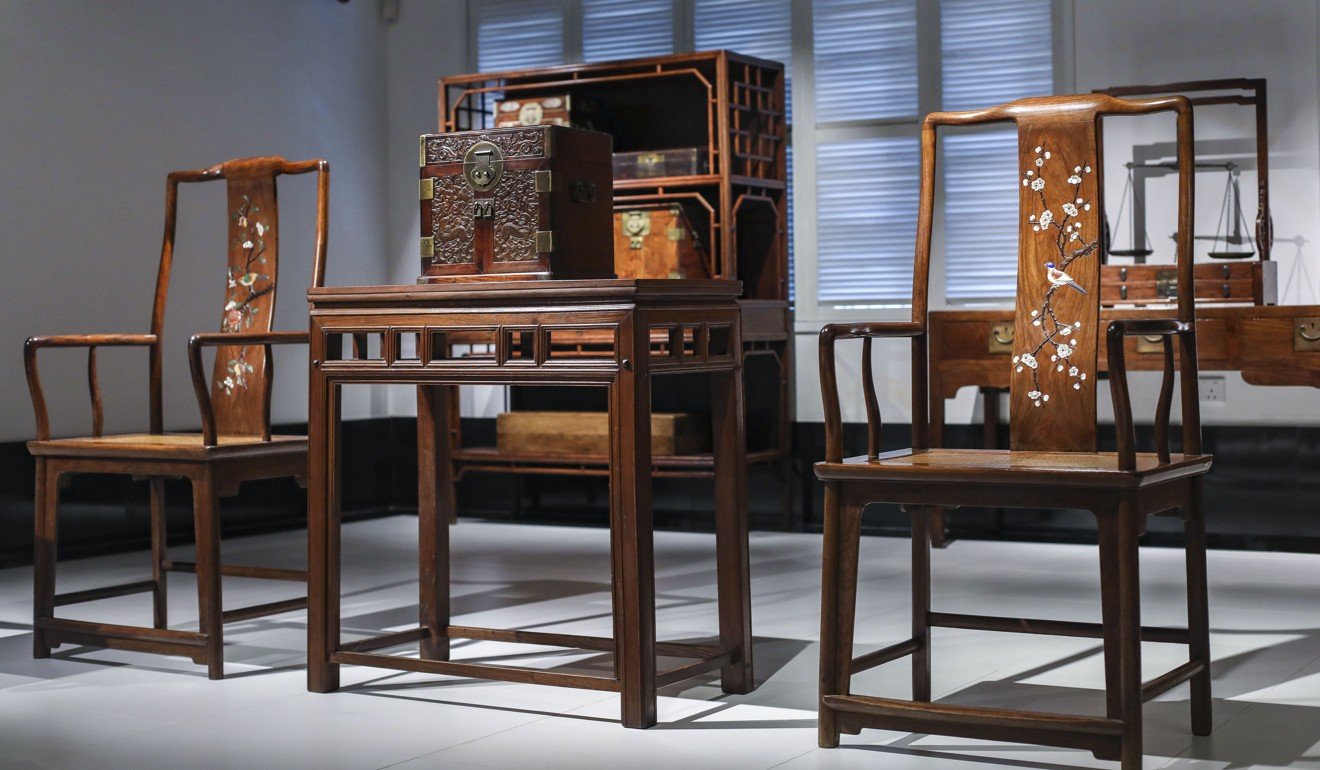
Members of the group seem to enjoy sitting in a southern officials’ armchair inlaid with mother of pearl and lapis, which is a semi-precious stone, as Kong explains that the size and shape of chairs indicated rank and social status. The foot bars kept the scholar from chilling his feet on the cold stone floors of his studio during winter months.
It is the narrative and stories behind the objects that bring them to life, and it’s no surprise to discover that this is the influence of Lynn Fung, who is a literature graduate and former journalist.
“It’s a challenge to turn so many objects into a single coherent narrative,” she says. “My academic background is literature and I am a bookworm. I believe narratives and stories are the best way to communicate. Personally I am not interested by numbers or pictures, but people and stories.”
She recalls her father explaining about the symbolism of chairs, and adds: “We want to shed light on who made, used and traded the furniture, and why – otherwise it’s just old wood.”
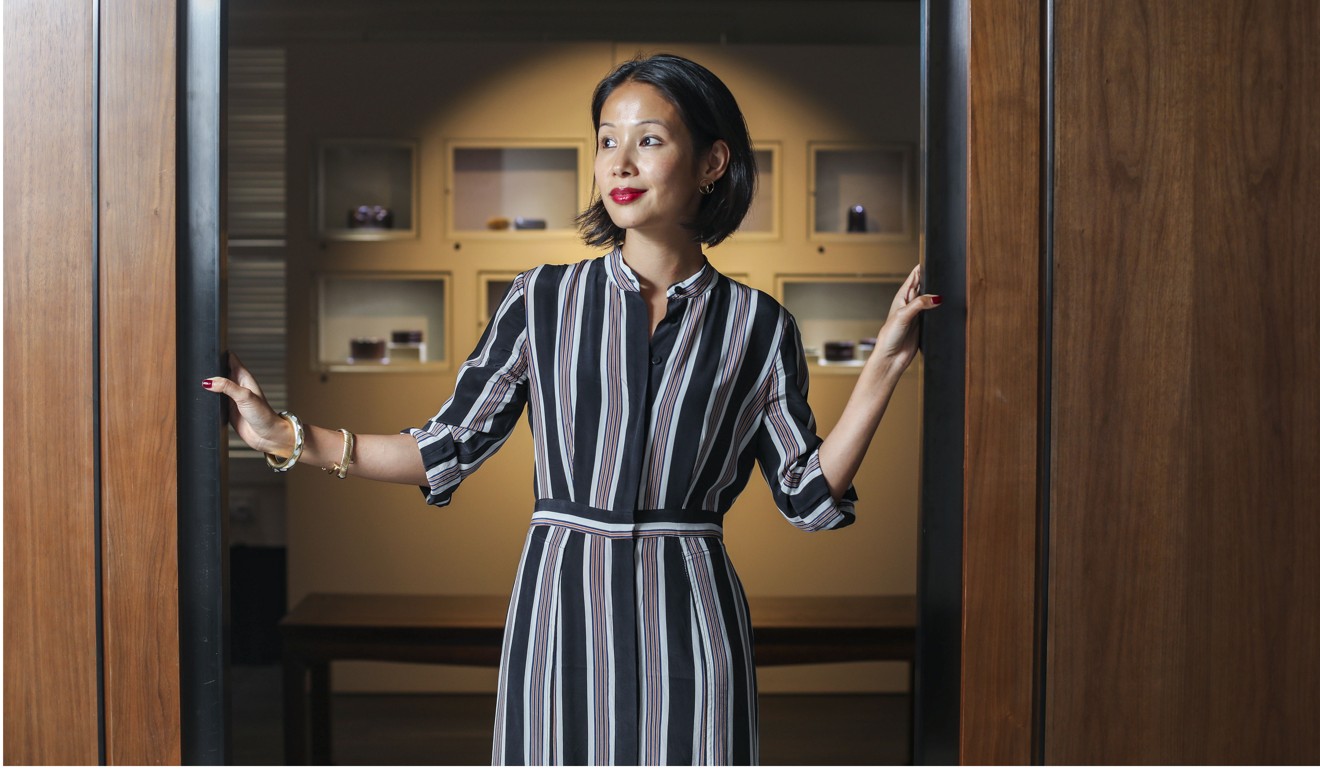
Fung admits that her father is still adding to his collection and even lets her have a say in the purchasing decisions.
“It reminds me of childhood arguments about what I should spend my pocket money on, but in reverse,” she says.
She says there are two things motivate her father to collect Chinese artefacts. “Originally, he was interested in learning about Chinese furniture. He spent every Saturday afternoon after family dim sum just pestering dealers in Hollywood Road for more information, and then it’s a bit like being an addict,” she says, explaining that a collector may buy one table, then a matching table, and then the matching chairs, and so on.
Chinese treasure hunters dig up 500kg of Qing-dynasty coins
“He says he never wastes his money on the wrong purchase because it is all part of his education, and compared to drugs or gambling I think I am happy with his addiction.”







